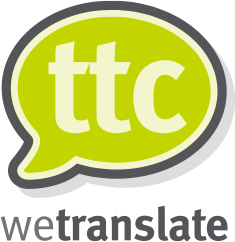Simultaneous Interpreting Services
Do you need to communicate effectively and smoothly in real-time with people who speak different languages at live events taking place anywhere in the world? Look no further, as our team of highly trained and experienced simultaneous interpreters is here to help.
Simultaneous interpreting is a crucial service for events, conferences, business meetings, and other situations where accurate and fast communication is essential. Our interpreters use specialized equipment and techniques to translate the message from the source language to the target language in real-time, allowing for a seamless flow of conversation.
With TTC wetranslate, you can expect:
- Experienced and professional simultaneous interpreters, who have undergone rigorous training and have a deep understanding of the languages and cultures they work with.
- Reliable and high-quality equipment, ensuring that the interpretation is crystal-clear and uninterrupted.
- A flexible and customizable service, tailored to your specific needs and requirements.
Don’t let language barriers hinder your communication and success at live events. Choose TTC wetranslate for all your simultaneous interpreting needs, and experience the difference that comes from working with the best in the industry.
Contact us today to learn more about our services and to receive a quote for your next event. Let’s break down language barriers and make communication easier, together, anywhere in the world.
Simultaneous Interpreting Case Study
What Our Clients Say
Do you have a question about simultaneous interpreting?
Not quite ready to get a quote? Book a free consultation with one of our experts.
FAQ
Interpreting services are required by individuals, professionals or public sector officers in order to communicate with speakers of other languages.
We provide various types of interpreting:
- Adhoc or consecutive interpreting
- Remote video interpreting
- Conference interpreting (also known as simultaneous interpreting)
- Telephone interpreting
- Business meeting interpreting
Our charges are based on the type of interpreting we provide. It could be per hour, per day, per task, or even per minute. Also traveling and accommodation will be charged if interpreters need to travel. Please contact us for a free quote where we clearly state our charges.
Our interpreters will have the appropriate experience and qualifications relevant to their assignment.
Yes we can source simultaneous interpreting equipment such as sound booths, headsets and a sound technician to oversee the process.
We cover over 100 language pairs. For list of our languages: https://ttcwetranslate.com/languages/
Yes, there is. This will change depending on the type of interpreting we undertake. We will clearly state this in our quote form.
When an interpreter is booked for a specific time and date, they are essentially reserving that time exclusively for that client. Last-minute cancellations mean that the interpreter loses the opportunity to take on other assignments they could have otherwise accepted.
Availability of suitably experienced interpreters can be a concern, especially for high-demand languages or busy seasons. In this respect, booking as early as possible will ensure that we can reserve the most suitable interpreter for your project.
Simultaneous interpreting is fast-paced and well-suited for large, formal events, while consecutive interpreting is more relaxed and better for smaller, more intimate settings.
Both methods have their own advantages and disadvantages, and the best choice depends on the specific needs of the event or meeting.


